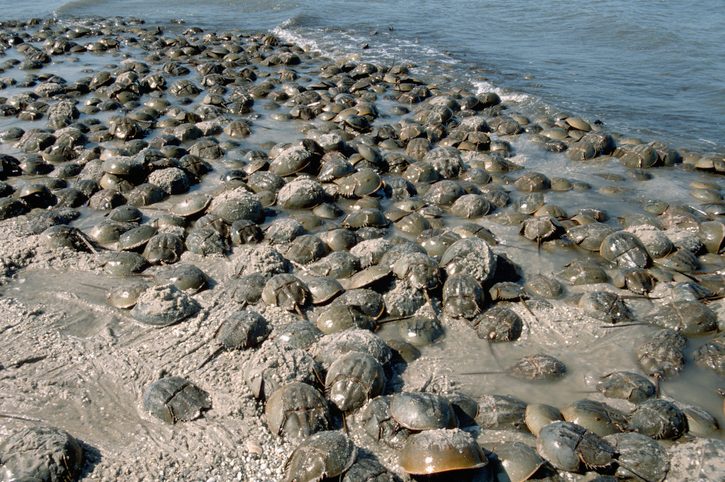Beyond their odd appearance and ancient history, there is another thing that makes horseshoe crabs stand out from the crowd: their bright blue blood.
The blue colour is caused by the protein haemocyanin, which is their equivalent of haemoglobin (the molecule that carries oxygen in human blood). Rather than being iron-based, as haemoglobin is, haemocyanin is copper-based.
When the blood is oxygenated, the copper means it takes on a blue appearance – but little or no colour when it’s not exposed to oxygen.
Horseshoe crabs aren’t the only animals with blue blood. Molluscs including octopuses, squids and snails, and arthropods such as scorpions, lobsters and crabs are blue-blooded for the same reason.
But there’s something else special about horseshoe crab blood: it contains cells that clot in the presence of toxic bacteria. A protein extracted from these cells is used to check that vaccines aren’t contaminated, meaning that horseshoe crabs have likely saved millions of humans from illness.
A synthetic molecule that does the same job was created by researchers in the late 1990s and is now starting to take over these vaccine safety tests.
More amazing stories from around the world
Top image: a gathering of horseshoe crabs on a beach. Credit: Getty
